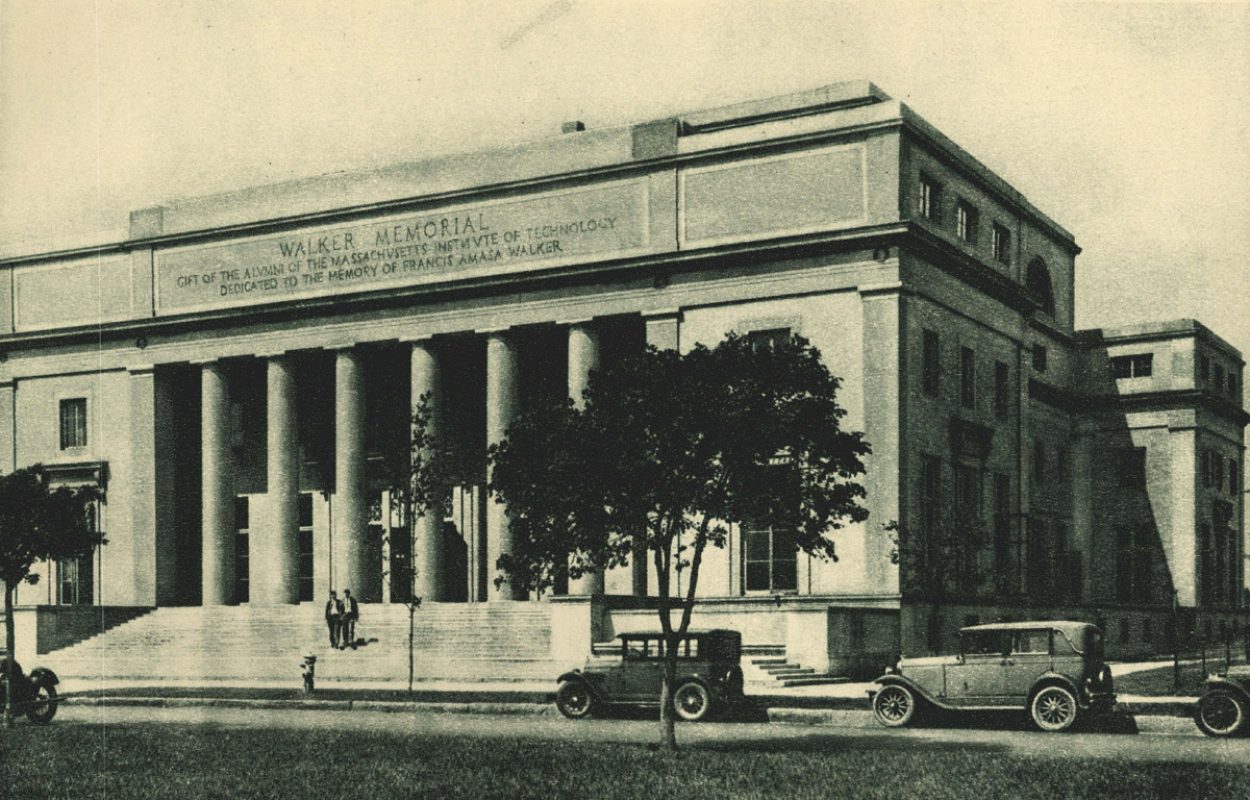Information Systems and Technology
MIT Information Systems was created under the office of the senior vice president in January 1983. An Information Systems Group was formed at that time by bringing the Institute’s Information Processing Services and Telecommunications Systems organizations into one administrative unit. The group was headed by the director of information systems, who, in addition to managing the group, was responsible for oversight of MIT’s educational, research, and administrative computing and telecommunications resources. These resources included central and departmental/laboratory computer facilities, computer networks, and personal computers, as well as office automation and word processing systems. James D. Bruce, professor of electrical engineering, was appointed director.
Information Systems went through several organizational transformations as the information technology (IT) infrastructure at MIT grew. In July 1986 Bruce became the first vice president for information systems. By 1992-1993 the office was divided into six departments: 1) Academic Computing Services, formed to promote and enable effective use of information technology in MIT education and scholarship; 2) Administrative Systems Development, formed to provide application development and related services in partnership with administrative units that support MIT’s research, education, and business needs; 3) Computing Support Services, involved with the delivery of end-user computing support services to the Institute, including the sale of computing equipment and services, training, consulting, publications, and software acquisition; 4) Distributed Computing and Network Services, established in July 1991 as a merger of Network Services with Project Athena’s operation and development activities to provide a campus-wide distributed computing infrastructure that supports education, research, and administration; 5) Operations and Systems, which provided a central computing facility and technological leadership to deliver, in a distributed computing environment, IT services supporting the Institute’s business needs; and 6) Telecommunications Systems, intended to provide coherent, universal, easily accessible telecommunications systems throughout MIT.
In March 1995 Information Systems was again reorganized to deliver “great systems fast” and to support dramatic increases in network-based applications and the number of users expected to increase from reengineering initiatives. The new team-oriented, process-driven framework was composed of five work processes: 1) Discovery, to frame technology solutions to be delivered to the MIT community efficiently and effectively; 2) Delivery, to realize business value as rapidly as possible from the implementation of new information technology products and services; 3) Integration, to implement an information technology infrastructure with high levels of reliability, availability, and serviceability; 4) Service, to keep MIT’s information technology infrastructure running in a reliable and efficient manner; 5) Support, to ensure the effective and efficient delivery of timely, high-quality support to the Institute’s information technology users; and three practices: Academic Computing, to promote and enable MIT education through the effective use of computers and other information technologies; Office Computing, to ensure that office computing customers derive maximum value from MIT’s information technology resources; and Voice, Data, and Image Networking. In addition, Competency Groups were established to ensure that appropriately skilled human resources were available to staff IS’s processes and projects.
James D. Bruce served as director of information services 1983 to 1986; and as vice president for information systems 1986 to 2003. In 2003, Jerrold Grochow succeeded Bruce as vice president for information services and technology.
Grochow oversaw the merging of Information Systems and Financial Systems Services into a new organizational unit, Information Services and Technology (IS&T). In 2005, Student Services Information Technology (SSIT) also became part of IS&T. In 2006, Administrative Computing and SSIT were combined to form the Student and Administrative Information Systems department. In that same year, academic computing services at MIT were realigned to better support educational innovation and improve responsiveness to faculty and students. The Office of the Dean for Undergraduate Education (DUE) formed the Office of Educational Innovation and Technology (OEIT) staffed primarily by the educational consulting and software development groups formerly in the Academic Computing group in IS&T. IS&T continues to maintain academic computing clusters, including Athena clusters. The Stellar development team moved from Academic Media Production Services to IS&T’s Infrastructure Software Development and Architecture (ISDA) group.
In 2009 Marilyn T. Smith succeeded Jerrold Grochow as head of Information Services and Technology. She oversaw the reorganization of the department in response to the recommendations of various working groups. Effective July 1, 2010, IS&T’s new organization was put in place with an emphasis on customer focus and improved service delivery. The department was organized around customer groups and customer needs. The new organization consisted of the following areas: Administrative Systems, Education Systems, Data Management, Systems Engineering, Customer Support, and Operations and Infrastructure.
In January 2014, John Charles was named Vice President for Information Systems and Technology. Informed by MIT’s 2020 IT Vision, IS&T moved to a more agile, responsive operating model in February 2015. The aim was to bring about enhanced ability to deliver services at scale and to meet the changing needs of the community while modernizing existing systems.
The restructuring began with a transition from an organization with seven areas and 37 teams to three areas – Emerging Solutions, Enabling Services, and Planning & Administration – and 14 teams. At the same time, IS&T pivoted to cloud-based, application programming interface (API)-centric architectures for IT solutions and services.
In the second half of 2015, IS&T undertook several cloud-based initiatives. It completed a major migration of MIT’s SAP enterprise resource planning application environment to the HANA Enterprise Cloud. It began migrating managed servers from on-premise data centers to the cloud. IS&T also delivered numerous cloud-based applications to the MIT community, from Dropbox to Quickbase.
Currently, IS&T is working with MIT’s IT Governance Committee to explore and develop updated governance and funding models to sustain the transformation of IT@MIT.
Prepared by the Institute Archives, MIT Libraries
Updated February 2007; October 2010; January 2014; July 2017
